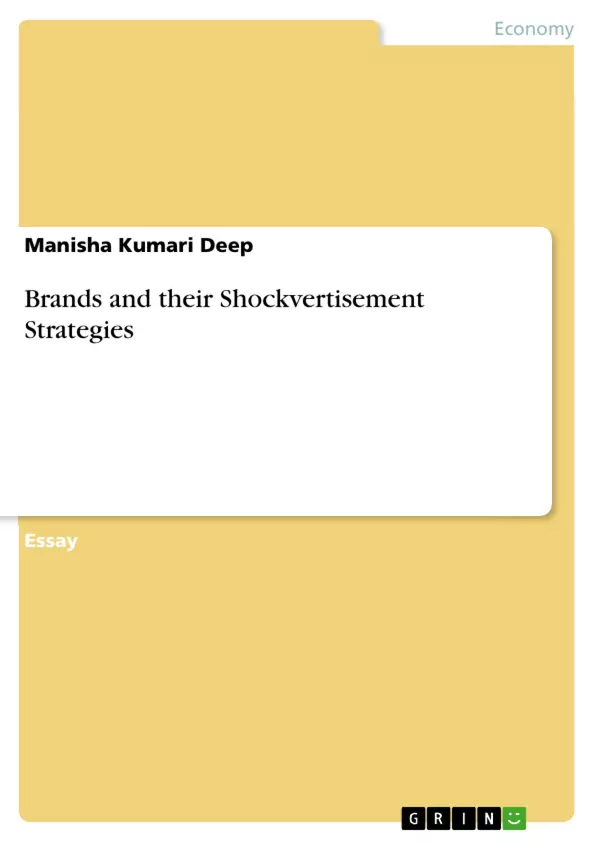Brand is not a new term for many of us. Whenever something has to be bought one looks for good stuff or good service provider. People who have capacity to pay little more for the same product look for Branded products or services. The word Brand is misunderstood as products or services which are better than the rest. There might be companies who are not Brands but have better product and services. But the market reach of Brands is more as they are constantly trying to reach us and leave an impression on us. So when you plan to buy some product or service, the first thing that comes in mind is Branded stuff. This is how Brands live with us in our minds and our lives.
The term Brand is supposed to have roots back in 950 AD. A hot burned wooden stake has been first called “Brand” in 950 AD. 'To brand' means to 'make an indelible mark of ownership', especially with a hot stake or iron and this verb usage has been known since the Middle Ages and is clearly derived from the earlier name. Branding earlier was a marketing strategy to stay ahead in competition especially to differentiate among big players and small ones. Previously usage and quality of products and services were shown and communicated much more than they were worth of. When advertisement used to come for Vicks Action 500, a person was shown being troubled with cough and cold. Just taking one tablet of Vicks Action 500 cured him and he was happy. In current time advertisement strategy
Other Reads by the Author
The Trial of Hope (Amazon)
An Alien Land (Kobo)
2 Moms (Kobo)
Unfolding Disaster (Kobo)
Walk to School (Kobo)
51 Points in Raising Awesome Kids (Kobo)
Organic IT Infrastructure Planning and Implementation (Amazon)
Grin Books
Positive Employee Recruitment and Retention Vital for Organizations
Digital India Mission. Implications on Social Inclusion and Digital Citizenship
Cloud Computing. DDoS, Blockchain, Regulation and Compliance
Organic eLearning (OE-Learning)
The Way of Prime Minister Narendra Modi's Leadership
Feasibility Study between Continuous Adaptive Risk and Trust Assessment and Organic Networks
I am my supervisor’s slave: Supervisor subordinate relationship is vital for organizational efficiency
Brands and their Shockvertisement Strategies
The Future of Blockchain in Banking
Social Media Marketing: Author’s Quandary Decoded (Amazon)
Inhaltsverzeichnis (Table of Contents)
- Brands and their Branding Strategies
- Shockvertisement Strategies
- Weighing Shockvertisement Impact
- Branding Mantra
Zielsetzung und Themenschwerpunkte (Objectives and Key Themes)
The text aims to explore the evolving world of branding and delve into the controversial and increasingly common strategy of Shockvertising. It examines the history of branding, its shift towards building brand image and loyalty, and the potential impact of Shockvertising on brands and consumers.
- The evolution of branding from product focus to building brand image and loyalty.
- The rise of Shockvertising as a marketing strategy.
- The potential impact of Shockvertising on brand image and consumer perception.
- The importance of carefully considering the ethical and social implications of Shockvertising campaigns.
- The importance of branding beyond logos and advertising, encompassing values, quality, and uniqueness.
Zusammenfassung der Kapitel (Chapter Summaries)
- Brands and their Branding Strategies: This chapter discusses the evolution of branding, emphasizing its shift from product focus to building brand image and loyalty. It examines how brands are trying to connect with their target audience by addressing their concerns and problems, ultimately building strong brand recognition and value.
- Shockvertisement Strategies: This chapter introduces the concept of Shockvertising, defining it as a controversial advertising strategy that violates social norms and aims to shock viewers. The chapter analyzes the effectiveness and potential risks of this approach, citing examples of successful and unsuccessful Shockvertising campaigns.
- Weighing Shockvertisement Impact: This chapter explores the potential impact of Shockvertising on brand image and consumer behavior. It discusses the ethical and social considerations associated with this strategy and emphasizes the importance of carefully weighing the potential consequences before implementing Shockvertising campaigns.
Schlüsselwörter (Keywords)
The text focuses on branding strategies, particularly Shockvertising, exploring its effectiveness, impact, and ethical considerations. Key terms include brand image, brand loyalty, consumer perception, shock value, social norms, ethical advertising, and brand reputation.
- Quote paper
- Dr. Manisha Kumari Deep (Author), 2018, Brands and their Shockvertisement Strategies, Munich, GRIN Verlag, https://www.grin.com/document/429402



